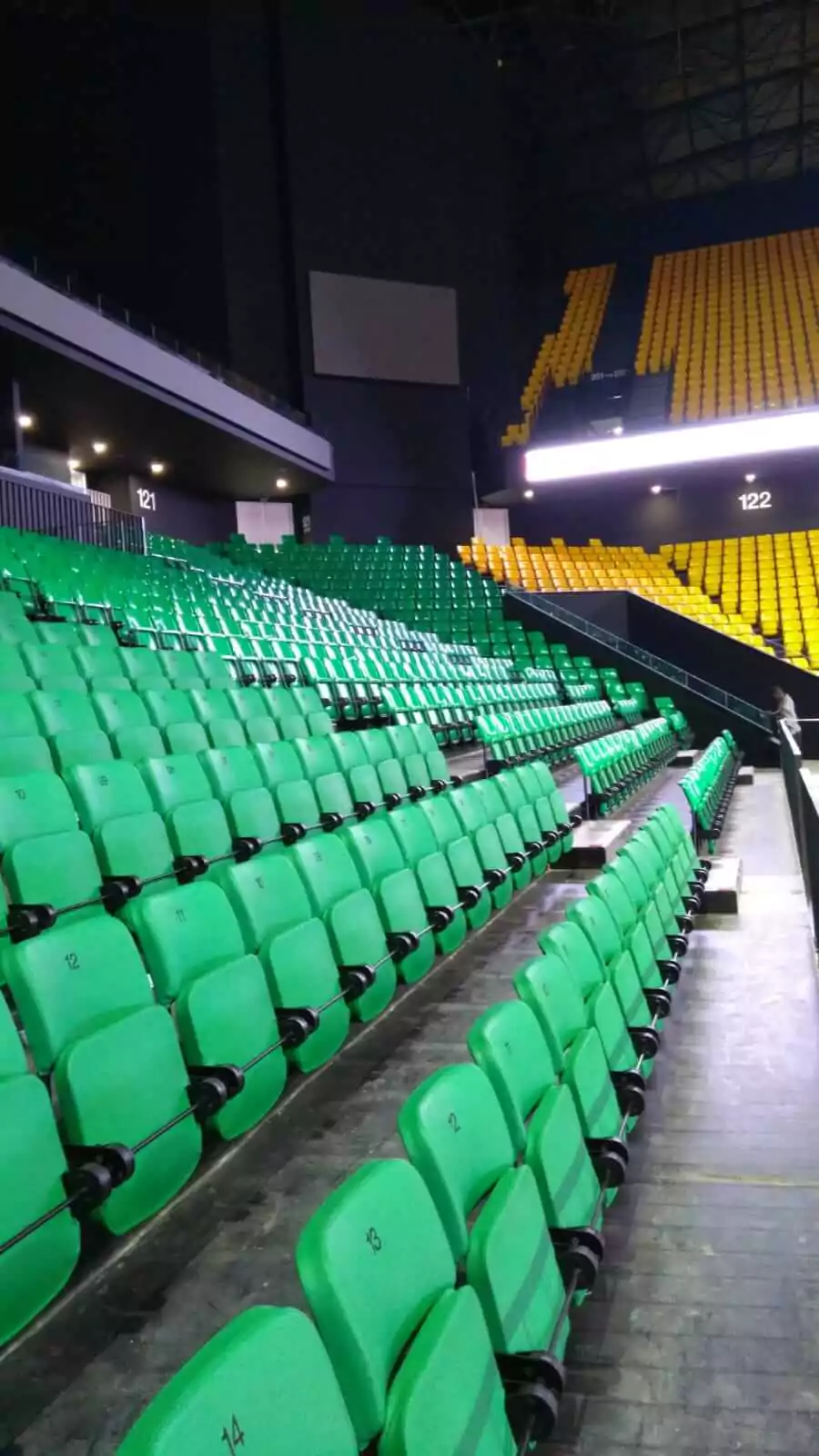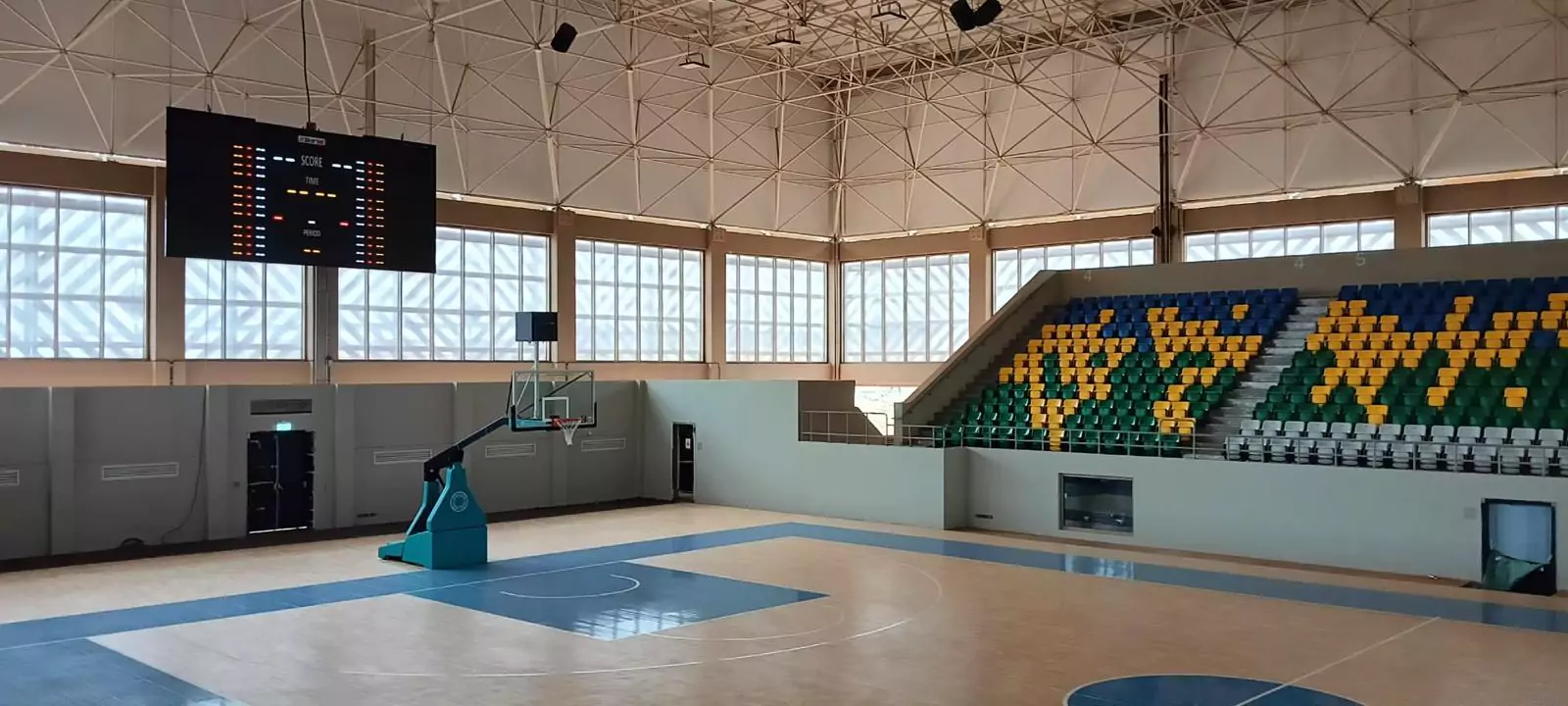Sustainability in Stadium Seating: A Future-Proof Investment and Eco-Friendly Choices
Sustainability: The Future of the Sports Industry
The sports industry generates billions of dollars each year, but with that growth comes a significant environmental impact. Particularly in large events and stadiums, seating plays a major role in the environmental footprint, from production to waste management. Therefore, making stadium seating more sustainable is not only about protecting the environment, but also providing long-term economic benefits.
In this blog, we will explore how sustainability can be increased in stadium seating, focusing on eco-friendly material choices, production processes, and durable designs.

1. Sustainable Material Selection: Eco-Friendly Seats
The materials used in stadium seat production directly impact environmental sustainability. Traditional materials often involve toxic chemicals and are difficult to recycle. However, with a growing emphasis on sustainability, the use of eco-friendly materials is on the rise.
Recycled Plastics and Composite Materials
Recycled plastics and composite materials are increasingly used in the production of stadium seats. These materials help reduce waste by repurposing plastic waste into durable components. Additionally, using recycled materials typically requires less energy during production, helping to reduce the carbon footprint of manufacturing.
Biodegradable Fabrics and Natural Fibers
In addition to plastics, fabrics used for seating upholstery can also be sourced sustainably. Biodegradable fabrics and natural fibers are an excellent alternative to petroleum-based options. These materials consume less water and energy during production and are compostable, reducing their impact on landfills and nature.
2. Energy-Efficient Production Processes: Zero Waste, Lower Carbon Footprint
The energy used in manufacturing stadium seats contributes significantly to their overall environmental impact. Traditional production methods often require large amounts of energy, whereas sustainable processes focus on increasing energy efficiency and reducing the carbon footprint.
Renewable Energy and Energy-Efficient Manufacturing
Many stadium seating manufacturers are turning to renewable energy sources such as solar and wind power to run their production facilities. These green energy sources drastically cut down on the amount of electricity needed to produce seats. Additionally, using energy-efficient machinery and processes ensures that production is as eco-friendly as possible, saving both energy and resources.
Zero Waste and Recycling Practices
The production of stadium seats generates significant waste. However, many manufacturers have adopted zero-waste policies and recycling practices to minimize their environmental impact. Materials left over from the production process are repurposed or recycled, reducing the amount of waste that ends up in landfills and minimizing the need for new raw materials.
3. Durable Designs: Long-Lasting and Low Maintenance
Stadium seats are typically used for decades. However, when these seats are replaced prematurely due to wear and tear, it results in significant environmental costs. Long-lasting and low-maintenance designs can reduce the need for frequent replacements, cutting down on waste and resource use.
Durable Materials and Designs
Stadium seating made from durable materials such as aluminum, steel, and reinforced plastic can withstand the test of time. These materials are resistant to wear, corrosion, and extreme weather conditions, making them ideal for high-traffic environments. Durable designs ensure that seats last longer, minimizing the need for replacements and reducing overall waste.
Easy Maintenance and Modular Systems
Seats designed for easy maintenance also help extend their lifespan. Modular seating systems allow damaged or worn-out parts to be replaced without the need to replace the entire seat. This not only reduces waste but also saves on replacement costs, making the seating systems more cost-effective in the long run.
4. Sustainability in Global Sporting Events: The World Cup, Olympics, and Other Major Events
Large sporting events, such as the 2022 World Cup and the upcoming 2024 Olympics, present a unique opportunity for sustainability. The environmental impacts of these events are immense, but they also offer a chance to set new standards for sustainable practices.
Eco-Friendly Sporting Events
The use of sustainable stadium seating made from eco-friendly materials is a key component of these major events. By using recycled and recyclable materials, these events can significantly reduce their environmental impact. The implementation of sustainable practices in high-profile events also sets a precedent for other sports organizations, inspiring further change.
Sustainable Management and Waste Control
In addition to eco-friendly seating, large sporting events are incorporating comprehensive waste management practices. Zero-waste policies and recycling programs are now standard at many sporting events, ensuring that waste is minimized and materials are properly disposed of or recycled.

5. Investing in Sustainable Stadium Seating for the Future
Sustainable stadium seating not only helps reduce environmental impact but also provides long-term economic benefits. Eco-friendly materials, energy-efficient production processes, and durable designs contribute to cost savings and a stronger brand image. As sustainability becomes a greater concern for sports organizations, choosing environmentally responsible seating options will be an essential investment in the future.
By prioritizing sustainable production and design, stadium owners and event organizers are making a smart investment—both in terms of environmental responsibility and long-term cost-efficiency.


